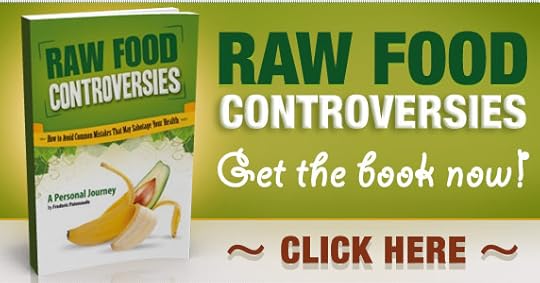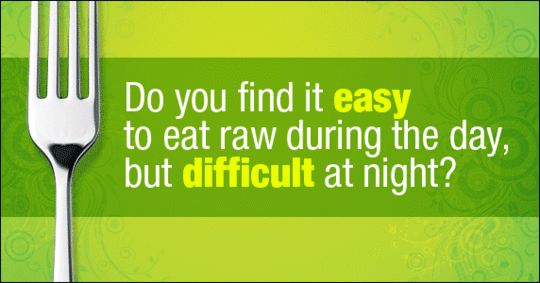Frederic Patenaude's Blog, page 42
January 23, 2012
The Woodstock Fruit Festival… Can’t Miss Raw Food Live Event!
I’ve been involved in the raw food movement for over 15 years. Years ago, there was a thriving time of raw food events and festivals of all kinds.
Then over the last few years there has been a sort of “dead zone.”
Not many BIG live raw food events and festivals have taken place.
And for the few that did take place, I couldn’t really recommend them because they were all about consuming more supplements, cacao and superfoods, and not about eating REAL raw foods.
Now that’s all changed with an amazing festival that will probably be the biggest raw food event of all times, and this one is really promoting the RIGHT kind of raw food diet.
The Woodstock Fruit Festival 2012 will take place on August 20 – August 28 in beautiful upstate NY.
People from ALL over the world will be coming to this festival.
Including lots of long-timers and experts such as:
- Dr. Douglas Graham – an athlete and a raw vegan since 1978, an author
of 80/10/10 Diet book
- Dr. Robert Lockhart – raw vegan for about 30 years
- Anne Osborne – fruitarian for over 20 years, who brought up 2 children
on the fruitarian diet, an author of the book Fruitarianism – The Path to
Paradise
- Dan McDonald – raw vegan for about 10 years, youtube channel -
- Harley Johnstone aka Durianrider - low fat raw vegan, endurance
cyclist
- Don Bennett – low fat raw vegan for over 18 years, the director of the
Health 101 Institute
- Michael Arnstein aka The Fruitarian – low fat raw vegan, competitive
ultra distance runner
- Tony Wright – raw vegan and human consciousness researcher, the
co-author of Left in the Dark book presenting an outline of his theory
about human brain owing a part of its extraordinary development to the
biochemistry of a fruit diet.
- Dr. Samuel Mielcarski – low fat raw vegan for over 12 years, licensed
physical therapist.
- Karen Ranzi – raw vegan since 1995, author of “Creating Healthy Children”
- Chris Kendall – low fat raw vegan athlete,.
- Ellen Livingston – low fat raw vegan since 2002 and a yoga teacher,
www.LivingYogaNow.com;
- Kristina Carrillo-Bucaram – low fat raw vegan for over 7 years and a
founder of non-profit food co-op called Rawfully Organic.
- Mike Vlasaty – low fat raw vegan athlete and power-lifter.
I think this is something you definitely do not want to miss. The energy of a festival like the Woodstock Fruit Festival is amazing. You’ll come back home reenergized, with new insights that could change your life.
Check out these videos to get an idea:
You can find out more about the festival by going to:
http://www.thewoodstockfruitfestival.com/
I would recommend signing up early. I heard from the organizers that spots are filling up fast.
The Woodstock Fruit Festival… Can't Miss Raw Food Live Event!
I've been involved in the raw food movement for over 15 years. Years ago, there was a thriving time of raw food events and festivals of all kinds.
Then over the last few years there has been a sort of "dead zone."
Not many BIG live raw food events and festivals have taken place.
And for the few that did take place, I couldn't really recommend them because they were all about consuming more supplements, cacao and superfoods, and not about eating REAL raw foods.
Now that's all changed with an amazing festival that will probably be the biggest raw food event of all times, and this one is really promoting the RIGHT kind of raw food diet.
The Woodstock Fruit Festival 2012 will take place on August 20 – August 28 in beautiful upstate NY.
People from ALL over the world will be coming to this festival.
Including lots of long-timers and experts such as:
- Dr. Douglas Graham – an athlete and a raw vegan since 1978, an author
of 80/10/10 Diet book
- Dr. Robert Lockhart – raw vegan for about 30 years
- Anne Osborne – fruitarian for over 20 years, who brought up 2 children
on the fruitarian diet, an author of the book Fruitarianism – The Path to
Paradise
- Dan McDonald – raw vegan for about 10 years, youtube channel -
- Harley Johnstone aka Durianrider - low fat raw vegan, endurance
cyclist
- Don Bennett – low fat raw vegan for over 18 years, the director of the
Health 101 Institute
- Michael Arnstein aka The Fruitarian – low fat raw vegan, competitive
ultra distance runner
- Tony Wright – raw vegan and human consciousness researcher, the
co-author of Left in the Dark book presenting an outline of his theory
about human brain owing a part of its extraordinary development to the
biochemistry of a fruit diet.
- Dr. Samuel Mielcarski – low fat raw vegan for over 12 years, licensed
physical therapist.
- Karen Ranzi – raw vegan since 1995, author of "Creating Healthy Children"
- Chris Kendall – low fat raw vegan athlete,.
- Ellen Livingston – low fat raw vegan since 2002 and a yoga teacher,
www.LivingYogaNow.com;
- Kristina Carrillo-Bucaram – low fat raw vegan for over 7 years and a
founder of non-profit food co-op called Rawfully Organic.
- Mike Vlasaty – low fat raw vegan athlete and power-lifter.
I think this is something you definitely do not want to miss. The energy of a festival like the Woodstock Fruit Festival is amazing. You'll come back home reenergized, with new insights that could change your life.
Check out these videos to get an idea:
You can find out more about the festival by going to:
http://www.thewoodstockfruitfestival.com/
I would recommend signing up early. I heard from the organizers that spots are filling up fast.
January 20, 2012
Shit Raw Foodists Say – The Original Video! Crazy Raw Vegan Statements
By the way, sorry about the use of the word "shit" but that's actually a trend right now on YouTube. It basically means, crazy stuff certain groups for people say. So Veronica and I decided to make two videos on crazy stuff raw foodists say.
By the way, it's supposed to be a joke! But of course, if you read between the lines, there's truth behind this.
And to clarify for the 1000th time, I am NOT 100% raw.
Shit Raw Foodists Say
Shit Raw Foodists Say, Part 2
If you're tired of the raw food confusion, read this:
Shit Raw Foodists Say – The Original Video! Crazy raw vegan statements
By the way, sorry about the use of the word "shit" but that's actually a trend right now on YouTube. It basically means, crazy stuff certain groups for people say. So Veronica and I decided to make two videos on crazy stuff raw foodists say.
By the way, it's supposed to be a joke! But of course, if you read between the lines, there's truth behind this.
And to clarify for the 1000th time, I am NOT 100% raw.
Shit Raw Foodists Say
Shit Raw Foodists Say, Part 2
If you're tired of the raw food confusion, read this:
January 9, 2012
Is Cooked Food Addiction a Growing Trend in Raw Leaders? Raw & Beyond by Victoria Boutenko Reviewed
Have you noticed that many raw food leaders, who once proclaimed that the 100% raw food diet is ideal no matter what, are not coming out of the closet and revealing that they are eating some cooked food?
Raw foodists make a big deal out of it, like when vegans give up and say that eating meat is okay, or politicians revealing that they do some coke occasionally.
I've been looking forward to a new book by Victoria Boutenko. It finally came out today!
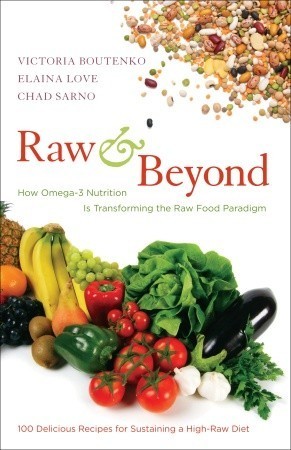 The book is called "Raw & Beyond – How Omega-3 Nutrition Is Transforming the Raw Food Paradigm". You can get it at Amazon.com, or Amazon Canada, or Amazon UK.
The book is called "Raw & Beyond – How Omega-3 Nutrition Is Transforming the Raw Food Paradigm". You can get it at Amazon.com, or Amazon Canada, or Amazon UK.
The book is actually co-written by three authors: Victoria Boutenko, Elaina Love and Chad Sarno.
Strangely enough, the first part of the book, written by Victoria Boutenko, reminds me a bit of my book The Raw Secrets (published in 2002), where I explained how the raw food diet made me sick and debunked the "raw food is law" paradigm.
It seems that many people, through painful trial and error, are coming to the same conclusion.
I give Victoria a lot of credit, because she's the one who used to say that eating 99% raw was "not enough." In her first book "The 12 Steps to Raw Foods," she talked about her amazing discovery of the raw food diet and the health transformation that her family had following it. She said that even 1% cooked food was enough to keep the cravings alive.
In Green for Life, Victoria acknowledged that raw foodists often reach a "plateau" in their health. But technically, a plateau is when you stop making progress. In this case, she talked about how her family and many people she knew actually got worse on the raw food diet, after a few years of non-stop improvements. She attributed it to a lack of greens in the raw food diet, and recommended green smoothies.
In this new book, she finally says it: I thought 100% raw was best, no matter what, but now I think it's okay to eat some cooked foods.
I'm paraphrasing, of course.
In her introduction, she reminds me a lot of what I wrote in Raw Secrets:
"For many years the theory of the raw food diet seemed so flawless to me that I couldn't find any errors in it . I was following a 100% raw food lifestyle and I was trying to inspire as many others as possible to follow. Years later, to my surprise, I found major flaws hiding in two of my favorite statements:
"Anything raw is superior to anything cooked"
"Raw food is best for humans because all animals in the world consume 100% raw food."
She then goes on to talk about her experience with green smoothies, and how that made an improvement. But, it was not enough.
"Adding green smoothies to our diet still did not bring us perfect health."
Finally, she blames her raw food diet as being too high in fat, particularly in omega 6 fats found in nuts, seeds and oils. The book presents some excellent research on the topic.
Finally!
I'm so glad that Victoria finally agrees with the low-fat message, after all these years.
She even agrees that eating cooked foods is better than loading up on nuts and seeds, which is something, honestly, I never thought she would say, given Victoria's strong stance against cooked foods.
I don't agree with all of Victoria's conclusions, such as the raw diet being harder to follow in colder climates due to lower quality produce, but her experience is nonetheless fascinating.
I think the raw food diet IS more difficult to follow in colder climates, but this has little to do with the quality of the produce. It has more to do with the colder temperature.
In one chapter, she says:
"I still don't know if it was a coincidence that my family first began to experience difficulties on a raw food diet after we moved from sunny Colorado to rainy Oregon. I think we would have avoided many of our health problems if we had included some cooked food in our diets right then, instead of loading on nuts and nut butters for several years."
Elaina Love
In the second part of the book, Elaina Love also comes to similar conclusion. She even says "I have noticed that, for whatever reason, I often don't look as healthy while eating a 100% raw diet. I can't explain why. When I've added some cooked food back into my diet, people often say to me, "You look great! What are you doing?" I find it interesting that when I'm eating some cooked food instead of only raw, I get more compliments on my looks."
As a side note to this, when I was younger, maybe 25 or 26, I used to be a lot skinnier. My face looked skinnier. Occasionally, I would binge on cooked foods, and not always the healthiest kind. The next day, I would go to a party and people would say, "You look good — stronger."
In reality, my face was just puffy! But to people, that looked better than a skinny face.
I'm not saying that this is the same that Elaina Love experienced, but I'm just relating some of my experience on how people have perceived my looks based on their own weight expectations.
Chad Sarno: High Cholesterol on a Raw Food Diet
My favorite part of the book was the chapter written by Chad Sarno.
Chad is an amazing chef. I met him in Portland almost 10 years ago, when he was getting started and would design raw food menus for restaurants in London.
At the time, Chad would often eat large salads with kale and oil, and thought it was healthy.
In his chapter, he talks about his first blood test he got done after he was hired to be a chef for Whole Foods Market. He discovered that his cholesterol was high, and that his triglycerides were off the chart.
So what did he do? He decided to go on a 100% whole food diet, with no agave, no maple syrup, no coconut oil, no olive oil. He focused on greens, beans and grains.
In four mouths, his cholesterol dropped by 100 points and his triglycerides went back to normal.
Chad was eating a typical raw food diet with some gourmet dishes, and his blood test was showing him that he was at a high risk for heart disease, even according to American standards, which are not the healthiest in the world.
The he talks about his change in diet, and why he's living an oil-free lifestyle (I just came up with that word!).
He eats beans, grains, whole foods, some avocados and nuts. It was not clear how much fruit he eat now.
Finally, the book includes a ton of great recipes. Most recipes don't include any nuts and seeds, and the chefs have even chosen to include some lightly steamed foods in some recipes. That's cool with me.
Raw Food Leaders Coming to Terms With Reality
I think Raw & Beyond is a very positive book for the raw food world. It's about time that raw leaders wake up and realize that a lot of what they've been saying for years simply isn't true.
I now feel like an old-timer with the low-fat message. I personally went through a similar process, when I first wrote my book Raw Secrets in 2002. That's almost 10 years ago! Back then, I was already talking about the concept that just because something is raw, it doesn't mean it's healthy, and why raw foodists eat too many nuts and seeds.
At the time, I didn't get it completely. I still used some oils, and did not ban them completely from my diet until 2005 or so.
The list of former raw foodists is growing every year now, and I know many people are confused and wonder why people who used to be strict raw foodists are now eating cooked food.
The reason is simple: They've grown up!
If you look at a lot of the advice given by raw food experts, it simply doesn't hold water.
In my last book Raw Food Controversies, I spent 400 pages debunking many raw food myths. I used to be one of the lone voices on the subject, but now many others have joined. Thankfully, the 80/10/10 Diet by Doug Graham is becoming really popular and many are waking up to the reality of fat and oils.
In the end, I still believe that fruits and vegetables are the best foods we can eat, but as I've said many times, eating a low-fat diet is more important than eating an all-raw diet.
What About the 80/10/10 Diet?
Someone familiar with the 80/10/10 Diet might read Raw & Beyond and analyze it in a different way. For example, a case could be made that Victoria, Elaina and Chad never tried to eat a true low fat raw food diet, which would be a very high-fruit diet, with no oil and minimum amounts of nuts and seeds.
80/10/10 people eat a ton of fruit to compensate for the lack of nuts and seeds, or cooked foods, and many do extremely well on this diet.
I personally have had great results with the 80/10/10 diet. In fact, I eat an 80/10/10 diet in terms of my ratio of calories (I get less than 10-12% of my calories from fat on average). The only difference is that I no longer eat an all-raw 80/10/10 diet.
That's my preference. I go through different phases of eating more and less fruit.
As I've explained in my book Raw Food Controversies, there are pros and cons to each approach. Some prefer and feel better eating 100% raw, while others, like me, prefer to also include cooked foods.
Of course, if someone eats both cooked and raw foods, they're no longer a raw-foodist, according to a true definition of the term, which would be "someone who only eats raw foods."
So be it.
As I've said many times, it's better to be healthy than stick to a philosophy just for the sake of it.
On the other hand, you'll always have many people who will claim to feel a lot better on a 100% raw food diet. That's okay too.
Here's what matters:
1) Eat a plant based diet — get rid of the dairy, meats, and other animal products.
2) Get rid of the oil — eliminate all olive oil, flax oil, coconut oil, or other refined oils. They do more harm than good. They're just refined foods, and can put you at risk of heart disease just as fast as animal products.
3) Limit fats — that includes avocados, nuts, seeds, etc. Eat them in small quantities, like 1-2 ounces of seeds in one day, or half an avocado.
4) Eat plenty of fruits and vegetables.
5) Eat your greens!
6) Exercise.
7) Enjoy your food!
I think the new book Raw & Beyond will wake up some people, thanks to Victoria's popularity. Make sure to check it out.
It just came out today, so you can already order it:
Amazon.com: http://amzn.to/wbR6Y9
Amazon Canada: http://amzn.to/xqaMWt
Amazon UK: http://amzn.to/zmvMgA
December 28, 2011
The Best Raw Food and Health Vegan Books of 2011
I try to stay current with what's happening in the health and raw food worlds. Every year, I read between 40 and 75 books.
This year, I read close to 60 books. Here are the top books that are making it on top of my list this year. They are not in any particular order.
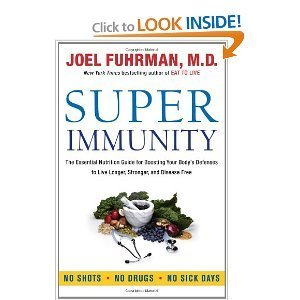 Super Immunity — By Dr. Joel Fuhrman
Super Immunity — By Dr. Joel FuhrmanJoel Furhman is a great advocate for healthful living. This new book goes in the same direction as his "Eat to Live" series, but this time he focuses on immunity, how to strengthen it and improve it.
The moral of the book is: eat your greens! But that's only a part of the story.
If you have your doubts about vaccines and their effectiveness, but don't want to throw the baby with the bath water when it comes to the germ theory and contagious illnesses, you'll want to to give this book a read.
It's the best combination of science, alternative health information and nutrition that I've come across so far this year.
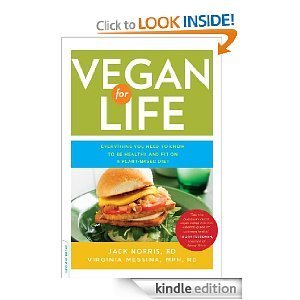 Vegan for Life, by Jack Norris
Vegan for Life, by Jack NorrisI was impressed by "Vegan for Life." This is not a raw food book per se. In fact, the author definitely does not recommend a raw food diet, but is a vegan advocate. It contains everything you would want to know about a vegan diet in every stage of life.
The nutritional information is top-notch. I don't agree with all of the advice, but overall "Vegan for Life" is a must read for all vegans.
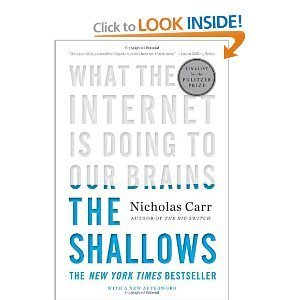 The Shallows: What the Internet is doing to our brains, by Nicholas Carr
The Shallows: What the Internet is doing to our brains, by Nicholas CarrHave you noticed that your attention span is shorter this year than say 5 or 10 years ago? You may think that it's age-related. But, there's a great amount of research to prove that the way we use the Internet, smartphones and social media is transforming the actual structures and functioning of our brains!
The bottomline: we've moved from being able to focus on one thing — linear thinking — to having a very short attention span. A person today can scan through a tremendous amount of information online, but retains very little of it.
The worst part is: once you've changed the way you process information on the Internet, it affects how you process ALL information. A must read.
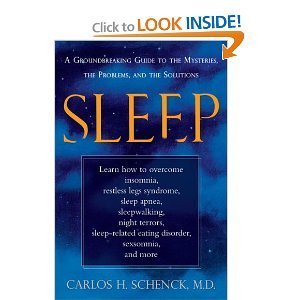 Sleep: a Groundbreaking Guide to the Mysteries, Problems and Solutions, by Carlos Schenck
Sleep: a Groundbreaking Guide to the Mysteries, Problems and Solutions, by Carlos SchenckThe book "Sleep" blew my mind. I thought I knew about sleep, but I was wrong.
Have you ever wondered why some people need a lot of sleep, while others don't? Why are some individuals labeled as "lazy" because they can't function unless they sleep until 10, while others are up so early that they inevitably pass out early in the evening and can't function in social gatherings.
We have a lot of misconceptions about sleep. This is a book that explains the common sleep disorders, a lot of them you've probably never heard about.
Sleep sex or sleep eating anyone?
The book is fascinating and will help you understand sleep disorders. The solutions provided are mostly pharmaceutical, so you'll have to look somewhere else for natural answers, but to understand sleep disorders, this is the best book I have read.
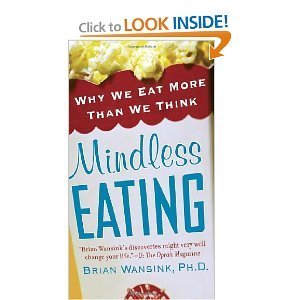 Mindless Eating: Why We Eat More Than We Think, by Brian Wansink
Mindless Eating: Why We Eat More Than We Think, by Brian WansinkThis is a new book in a series of books about the science of how we eat. Why, for example, do people inevitably eat more out of large containers, even if the amount of food provided is the same?
This is a fascinating book about how we eat, and why we often overeat. It's a fun read and I suggest you pick it up immediately if you would like to improve your relationship with food.
 Steve Jobs, by Walter Isaacson
Steve Jobs, by Walter IsaacsonOkay, this is not a health book per se. I thought the Steve Jobs biography by Walter Issakson was great. This is probably the book I read the fastest this year!
If you're fascinated by Steve Jobs, and even want to hear some interesting details about his eating habits, read the book!
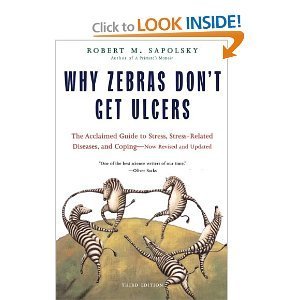 Why Zebras Don't Get Ulcers, by Robert M. Sapolsky
Why Zebras Don't Get Ulcers, by Robert M. SapolskyThis is a book on the science of stress, and exactly how it affects us at every level.
As I'm reading this book, I'm realizing how much I've minimized the importance of stress-reduction techniques in health.
We focus so much on food and fitness, but stress-management is just as critical. Psychological stress can make us age faster and can affect many aspects of our lives.
This is a serious, scientifically researched book by a respected professor, but it's also fun to read.
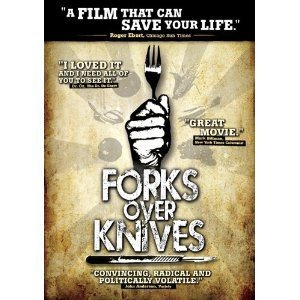 Movie: Forks Over Knives, by T. Colin Campbell
Movie: Forks Over Knives, by T. Colin CampbellHave you seen the movie Forks Over Knives? So far, I've been able to convert many people to a plant-based diet with this movie alone.
There's also a book available separately, with lots of great recipes for beginners.
This is the perfect gift for someone you care about.
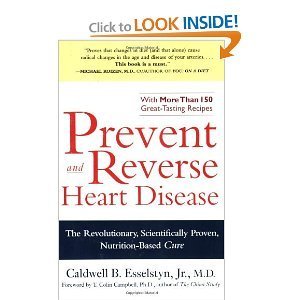 Prevent and Reverse Heart Disease: The Revolutionary, Scientifically Proven, Nutrition-Based Cure , by Caldwell B. Esselstyn
Prevent and Reverse Heart Disease: The Revolutionary, Scientifically Proven, Nutrition-Based Cure , by Caldwell B. EsselstynI only read this bomb by Dr. Esselstyn this year, after my father died of a heart attack in May. Although I knew that a plant-based diet can prevent cardio-vascular disease, I learned a great deal from Dr. Esselstyn's book.
If you think that olive oil can be "heart healthy," then you need to read this book. Dr. Esselstyn demolishes this assumption and many others about heart disease, and proves that if you follow his program, your chance of dying of heart disease will effectively be "zero."
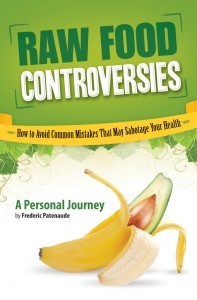
Raw Food Controversies
Okay, can I throw my own book in there? I spent half a year writing this book non-stop, even while traveling around the world, and managed to release it last January.
Initially, the book was going to be only 200 pages. Then it grew to a monstrous 400+ pages!
This is the biggest, most-researched book on the controversies in the raw food world, and I want you to get your hands on it.
If you want to know the full story of how many people have damaged their health following the wrong kind of raw food diet, and what you should eat instead to stay healthy and avoid these problems, read Raw Food Controversies.
Many of my readers told me that once they started reading it, they couldn't put it down. It's a combination between a novel and a raw nutrition book! Check it out at www.fredericpatenaude.com/rawfoodcontroversies
December 26, 2011
Intermittent Fasting for Health and Energy or Skipping Breakfast
Breakfast is universally recognized by the mainstream to be the most important meal of the day. But is it really?
Type the question "is breakfast important" in a search engine, and you'll be overwhelmed with results such as:
- Why breakfast is the most important meal of the day
- Why skipping breakfast is harmful
- Common sayings such as "eat breakfast like a king, lunch like a prince and dinner like a pauper"
Yet, many healthy people commonly skip breakfast. I recently have been experimenting with intermittent fasting (IM), which involves not eating during a long period of the day, typically 16 to 19 hours, and only eating during the remaining hours.
I find that when I skip breakfast, I have more energy and better concentration, which goes against all commonly held views.
Many raw foodists I know, especially older experienced ones like Dr. John Fielder in Australia, or Dr. Graham, generally only eat two large meals a day and fast in the morning.
Eating a large breakfast is also not a common tradition in many cultures. The French, for example, typically only have coffee and maybe a croissant for breakfast.
About a hundred years ago, a doctor by the name of Edward Dewey wrote an entire book called the "No Breakfast Plan and the Fasting Cure." This book is now public domain and you can find it easily on the Internet.
Dewey was a big influence to the Natural Hygiene movement of this century. In his book, he describes a simple method that he discovers, and gives dozens of testimonies of people who managed to recover from all sorts of ailment following it.
The method was simple: don't eat breakfast! Instead, fast in the morning, and eat two meals a day.
Using this method alone, and not changing anything else in the diet, Dewey obtained spectacular results.
How did Dr. Dewey get those results with his patients if we are told that breakfast is the most important meal of the day?
The reason we are told this is that some studies have shown that people who have breakfast tend to be thinner than people who skip it entirely or only have coffee.
It's true that many people, especially guys, skip breakfast, barely eat for lunch, and then overeat all night on junk food at home. They feel so bad the next they that they are forced to skip breakfast again, and so on in a never ending vicious circle.
The idea is not so much that skipping breakfast is good or bad for you. The idea is that many people find relief by letting their body enough time to process foods.
You've probably heard of the "daylight diet," where people, instead of skipping breakfast, skip dinner or avoid eating outside of daylight time. Many even set themselves a cut off time to stop eating, like after 3 p.m.
There's also the Fast-5 Diet, where you only eat in a five hour window during the day, for example, from 2 p.m. until 7 p.m.. This schedule can be changed around, such as 11 a.m. until 4 p.m.
There's the Warrior Diet, where people don't eat anything during the day except maybe some fruits and vegetables, and then eat a large meal at night. This diet is supposed to reproduce the pattern of eating our ancestors followed.
Then of course there's the no-breakfast plan, where you skip breakfast entirely and only eat lunch and dinner, typically a 1 p.m. lunch and a 6 or 7 p.m. dinner.
All of these diets are forms of intermittent fasting, where the body has enough time to fast and bring its blood sugar low enough before you start eating again.
This pattern, because of lower dips in insulin levels, promotes fat burning. If done correctly, the overall caloric intake will be adequate - not too much, not enough. The difference is that the body will start using its own fat sources for calories, instead of always burning the foods you eat.
People who follow any form of intermittent fasting often report a greater sense of energy and well being, and better digestion.
Even modern science supports intermittent fasting. For example, a recent article in the New York Times talked about some research done on fasting and exercise (http://well.blogs.nytimes.com/2010/12/15/phys-ed-the-benefits-of-exercising-before-breakfast/)
The researchers found that those who exercised on an empty stomach had the best results, as opposed to those who ate a big breakfast and THEN exercised.
I've personally found that whenever I skip a meal or two, I have lots of energy. I can easily spend the entire day running errands, even exercising and not thinking about food until about 3 or 4 p.m., when hunger sets in.
Intermittent fasting doesn't have to be a lifestyle. For some people, the best pattern is to occasionally skip breakfast (or dinner), or even follow a quick 24-hour fast once in a while. You don't have to do it everyday, although many people do with great success.
Some tips:
- Typically, athletes and people needing to gain some weight should not skip breakfast or dinner. Instead, they should eat at least three meals a day to get the calories they need.
- Some health conditions are not compatible with intermittent fasting. Talk to your doctor.
- Whether you skip breakfast or dinner is up to you.
- You can incorporate intermittent fasting with any diet. However, some diets are low in calories, such as the raw food diet. Therefore, you should master those diets first and learn to get enough calories before you attempt to try intermittent fasting. Please don't try this if you are inexperienced with a 100% raw food diet.
- Typically, the older you are and the more body fat you have, the more you can benefit from intermittent fasting. Younger, active people should still eat enough for their needs.
- Intermittent fasting is not an excuse for overeating. The pattern should not be "overeat and purge." Instead, you give your body more time to digest and fast, and then eat normal meals.
What is your experience with intermittent fasting? Let me know below!
December 17, 2011
Simple Raw Food Recipes Now: Raw Vegan Sushi
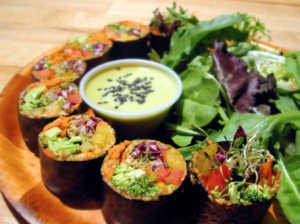
Are you getting started with raw foods? Need some new recipes for your healthy diet? Or, maybe you're an old-timer looking for something to spice up your menu?
Well if you've ever wanted:
* Savory raw recipes that are still lower in fat
* A gourmet treat for guests or "non-raw" friends
* New ideas for Asian-inspired raw food cuisine
* Or simply some creative vegan dishes
… here's your solution.
Raw vegan sushi is an all-time favorite that is sure to be a hit for a special dinner, at raw food potlucks, or to share with your friends and family.
You will need the following:
#1: Wrap
First off, what will hold together your ingredients?
There are two main options:
* Raw greens. To keep things simple, you can choose romaine lettuce, collard leaves, or another favorite green of your choice. Make sure to select leaves that are large enough to house your vegetables and other seasonings.
* Raw nori wraps, which will give you a more "authentic" sushi taste and texture. Untoasted nori is available at most health food stores and even regular supermarkets.
Set up your working space with a clean cutting board and knife, and place your wraps on the board – ready to be filled. Let's continue.
#2: Vegetables
Fresh vegetables are the heart of your sushi.
Possibilities are endless:
* Fruit-vegetables: tomato, cucumber, zucchini, summer squash, baby eggplant, okra
* Root vegetables: carrots, radish, beet, daikon, celeriac
* Cabbages: purple cabbage, green cabbage, cauliflower, broccoli
* More: celery, sprouts, baby greens, shallots, chives
Add in a couple from each category or simply use what you have in the kitchen. Just rinse, peel, and chop them finely to include in your sushi rolls.
#3: Savory Seasonings
Many healthy ingredients are available to make your recipe pop with flavor.
Some recommendations:
* Sun-dried tomatoes, peppers, or a raw salsa
* Avocado slices, or a spoonful of fresh almond paté
* Savory raw dressings made of fruits and vegetables
And if you are not concerned with hygienic rules or just want to splurge:
* Diced fresh ginger, onion, or garlic
* Olives, pickled ginger, or fermented vegetables
* A bit of tamari, wasabi, or other sauce
After assembling wrap and vegetable base of your rolls, top with your choice of seasonings and roll up each wrap tightly, using a little water on the edge to seal if necessary.
Carefully slice the rolls into bite-size pieces (with a very sharp, clean knife). Arrange on a platter and enjoy!
Here are 3 more tips for better sushi:
* Don't overstuff each roll. Play around with different proportions of vegetables and fillings.
* Vary your fillings. Try making a couple different flavors of sushi rolls to keep things interesting.
* Have your recipe handy! Be prepared for some awesome feedback from any friends who try this.
Give it a try and let us know what you think in the comments below.
This recipe has been inspired by the must-have recipe e-book for health enthusiasts, 7 Gourmet Raw Vegan Recipes Everyone Should Know. Gain access to this e-book and more exclusive content with the Raw Vegan Mentor Club.
Also, for more raw food recipes like this, be sure to check out our brand new Savory Raw Recipe DVD. Veronica has put together some amazing recipes (with video) for you guys – you won't be disappointed!
Simple raw food recipes now: Raw vegan sushi

Are you getting started with raw foods? Need some new recipes for your healthy diet? Or, maybe you're an old-timer looking for something to spice up your menu?
Well if you've ever wanted:
* Savory raw recipes that are still lower in fat
* A gourmet treat for guests or "non-raw" friends
* New ideas for Asian-inspired raw food cuisine
* Or simply some creative vegan dishes
… here's your solution.
Raw vegan sushi is an all-time favorite that is sure to be a hit for a special dinner, at raw food potlucks, or to share with your friends and family.
You will need the following:
#1: Wrap
First off, what will hold together your ingredients?
There are two main options:
* Raw greens. To keep things simple, you can choose romaine lettuce, collard leaves, or another favorite green of your choice. Make sure to select leaves that are large enough to house your vegetables and other seasonings.
* Raw nori wraps, which will give you a more "authentic" sushi taste and texture. Untoasted nori is available at most health food stores and even regular supermarkets.
Set up your working space with a clean cutting board and knife, and place your wraps on the board – ready to be filled. Let's continue.
#2: Vegetables
Fresh vegetables are the heart of your sushi.
Possibilities are endless:
* Fruit-vegetables: tomato, cucumber, zucchini, summer squash, baby eggplant, okra
* Root vegetables: carrots, radish, beet, daikon, celeriac
* Cabbages: purple cabbage, green cabbage, cauliflower, broccoli
* More: celery, sprouts, baby greens, shallots, chives
Add in a couple from each category or simply use what you have in the kitchen. Just rinse, peel, and chop them finely to include in your sushi rolls.
#3: Savory Seasonings
Many healthy ingredients are available to make your recipe pop with flavor.
Some recommendations:
* Sun-dried tomatoes, peppers, or a raw salsa
* Avocado slices, or a spoonful of fresh almond paté
* Savory raw dressings made of fruits and vegetables
And if you are not concerned with hygienic rules or just want to splurge:
* Diced fresh ginger, onion, or garlic
* Olives, pickled ginger, or fermented vegetables
* A bit of tamari, wasabi, or other sauce
After assembling wrap and vegetable base of your rolls, top with your choice of seasonings and roll up each wrap tightly, using a little water on the edge to seal if necessary.
Carefully slice the rolls into bite-size pieces (with a very sharp, clean knife). Arrange on a platter and enjoy!
Here are 3 more tips for better sushi:
* Don't overstuff each roll. Play around with different proportions of vegetables and fillings.
* Vary your fillings. Try making a couple different flavors of sushi rolls to keep things interesting.
* Have your recipe handy! Be prepared for some awesome feedback from any friends who try this.
Give it a try and let us know what you think in the comments below.
This recipe has been inspired by the must-have recipe e-book for health enthusiasts, 7 Gourmet Raw Vegan Recipes Everyone Should Know. Gain access to this e-book and more exclusive content with the Raw Vegan Mentor Club.
Also, for more raw food recipes like this, be sure to check out our brand new Savory Raw Recipe DVD. Veronica has put together some amazing recipes (with video) for you guys – you won't be disappointed!
December 15, 2011
What Are The Most Unhealthy Foods You Could Eat?
Now, there's a lot of talk these days about health and nutrition.
It's all the rage. Everyone's asking things like:
* What's the ultimate healthy diet plan?
* How can we maximize our health?
* What are the best foods to eat?
But because nutrition can often be a finicky science, it's difficult to find a definite answer to these questions.
Though someone may feel like they've find the one true way, there's almost always another person who can contradict them with their results on a different style of eating, exercising, and so on.
I mean, it really is amazing how adaptable the human body is. Just take a look at any corner of the globe and you'll find an immense diversity of lifestyle practices that people use.
But what does that mean for us? For people looking to get started on a healthier diet NOW? Where can we even begin? There's got to be a better way of looking at things.
Well, there is. How about – instead of trying to figure health out from scratch – we start where we are and narrow things down.
So basically, a little bit of dietary process of elimination.
Here are 3 unhealthy foods that NO ONE disagrees with that are unhealthy:
* Hydrogenated Oils, Trans Fats and Deep Fried Foods.
Everywhere in the form of hydrogenated and partially hydrogenated oils in classic junk foods: chips, cookies, candies, and so on. Some of your favourites snacks that include hydrogenated oils might be Ritz Crackers or Twinkies and baking ingredients like margarine, or Crisco. All kinds of chocolate bars contain these hydrogenated and partially hydrogenated oils and some big name peanut butters (that everyone unknowingly thinks are good for them) do as well.
Deep fried foods like fries, chips, onion rings, pork rinds, corn dogs, chicken fingers, chicken fried steak etc can all be 50% fat or more by calories. When you deep fry foods, you essentially dehydrate them by pushing all of the water out of them and it gets replaced by oil in the deep fryer. So your innocent potato or battered zucchini stick is now 50% higher in fat now that it's cooked. Eat these regularly and your waist line and arteries are going to start showing it.
Not only are these oils 100% pure fat (zero nutrients, fibre and minerals), they are processed at very high temperatures, creating the trans-fatty acids everyone knows are horrible for your arteries and body.
Don't be fooled by clever marketing on packages, there is now a new term called mono and di glycerides that means hydrogenated oils as well. "A mono-glyceride (MG) is made of one fatty acid attached to glycerol, a di-glyceride (DG) is made of two fatty acids attached to a glycerol molecule, and a triglyceride is made of three fatty acids attached to glycerol."
You will find this ingredient in many health food store snacks and products as well. Be sure to read labels!
Don't buy products that contain hydrogenated, partially hydrogenated, mono or diglycerides, or anything else that sounds like a questionable ingredient.
* Refined white flour and white sugar.
White flour is what's left after grains are stripped of their husk and bran, while white sugar is the pure sugar crystals refined from sugarcane or other agricultural products.
These empty-calorie foods overstimulate the taste buds and are extremely calorie dense with no nutrition to back them up. To be avoided.
* Processed meat products with nitrates.
Hot dogs, bologna, sausage and other lunch meats are one of the worst possible food choices you can make.
With excessive amounts of fat, salt, and flavorings, these products are difficult if not impossible to digest and do not nourish the body.
So there we have it. No one will ever be able to perfect the art of health, but it's worth a shot. Simply get these 3 food groups out of your daily eating program and you're already on your way!
Frederic Patenaude's Blog
- Frederic Patenaude's profile
- 11 followers


